What Is Microsleep and How to Prevent It?
written by / January 29, 2020

When it comes to sleep, everyone needs a different amount, but lack of sleep can have a severe impact on your health. If you don’t get enough sleep, apart from the other well-known health effects, you’re prone to experience extremely short naps, referred to as microsleep.
What Is Microsleep?
When we get enough good-quality sleep, we can enjoy many benefits, such as emotional stability, a good mood, physical fitness, increased productivity, better mental and physical performance, resistance to inflammation, and the prevention of premature aging. Lack of sleep, on the other hand, can cause serious health consequences, including diabetes, cardiovascular disease, obesity, hypertension, and possible accidents.
Most accidents from insufficient sleep are linked to experiencing an episode of microsleep while driving or from working a long shift in a physical job. This refers to the moments that represent extremely short, unintended periods of sleep lasting for a few seconds. Moreover, during these moments, we aren’t aware of what’s happening around us. The brief loss of attention can be accompanied by a blank stare, prolonged eye closure, and head-snapping.
Microsleep episodes usually occur when two conditions are present: fatigue and the need to stay awake to execute monotonous tasks. Microsleep at work is very common, especially during meetings or while staring at a computer screen. Among the most severe concerns regarding microsleep episodes are driving and operating instruments.
During these episodes, although you may look conscious while walking or talking, with your eyes open, you’re actually cortically blind for seconds or even minutes. It’s a kind of autopilot—a sort of microsleep dream—where you don’t accept or process visual information, which increases the risk of an accident.
Studies on the severe health risks induced by sleep deprivation show that the risks are 7% higher for those who sleep about six hours and 13% higher for those who systematically sleep less than six hours. The individuals most at risk of causing an accident are sleep-deprived persons, such as night-shift workers and patients who suffer from sleep disorders like insomnia or sleep apnea. These same facts also apply to children.
What Is Microsleep in Psychology?
Some studies examined the processes in the brain during microsleep episodes. It was shown in a 2015 study published in NeuroImage that some parts of the brain reduced activity (for example, the thalamus, which regulates sleep). Meanwhile, other components, such as those in charge of sensory processing and attention, increased activity.
Experimental models using rats also demonstrated that the effects of sleep deprivation on the overall wakeful brain lead to certain microsleep symptoms. They were attributed to the distinct groups of motor cortex neurons that are inactive, or “sleepy.” Applying this to humans can explain why people make simple mistakes when sleep-deprived.
It’s challenging to investigate microsleep episodes, mainly because there aren’t many clinical diagnostic tools. Even the use of electroencephalography (EEG) may not be useful enough. Even though we can generally define what is microsleep, because changes in the brain during a micro nap are subtle and only parts of the brain are inactive, it’s easier to determine the states of sleep on the macro level.
It’s necessary to use more methods, such as polysomnography, to monitor brain function, eye movements, muscle activity, and heart rhythm during sleep. Functional magnetic resonance imaging (fMRI) is also an option that makes it possible to measure the changes in blood flow associated with different brain activity.
When these investigations involve people, psychological tests are required. They include a reaction time test, as well as the Karolinska Sleepiness Scale, Multiple Sleep Latency Test, and Maintenance of Wakefulness Test.
However, these methods for detecting and evaluating the most common microsleep warning signs—as well as the mouth yawning test, a test that counts the number of times a person yawns over a period of time—all have their limitations. However, because psychological tests are subjective and self-reported, they can’t be fully classified as universal. These tests are also usually limited because individuals aren’t aware of their real level of sleepiness.
What Causes Microsleep?
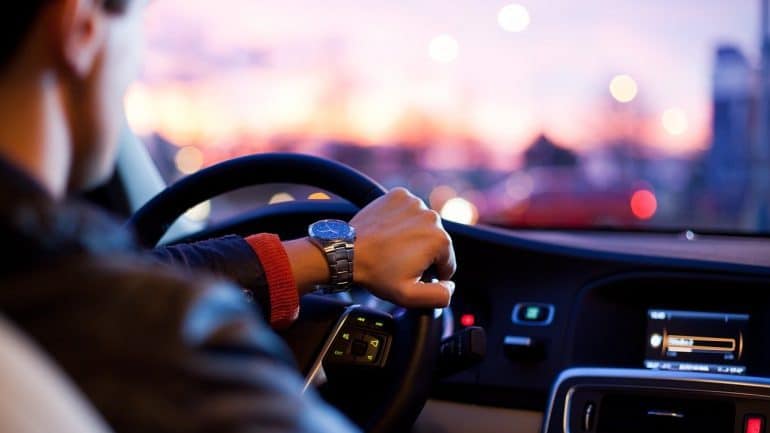
Our productivity and efficiency are sleep-dependent. When we’re sleep-deprived, our motor and mental functions start to shut down. The nervous systems in the body begin to respond more slowly, thus reducing the time for reaction and concentration. This, in turn, leads to making unwanted movements or experiencing accidents or micro blackouts, all while having difficulty performing regular activities.
The first signal that you’re sleepy is slow thinking. After 6 pm, your reaction time begins to slow down. Over time, your memory deteriorates, and at some point, your brain will no longer be able to form new memories. And without sleeping for a night, these same reactions become three times slower—which has the same effect as being drunk.
If micro napping happens to you several times a day, this means you’re too tired. A typical negative consequence of tiredness is that it’s more difficult to control your vision. When you’re exhausted, it becomes harder to control your eye muscles, and it’s more of a challenge to focus. This can lead to you involuntarily closing your eyes.
As a result, precautions must be taken to prevent any accidents from happening. The best solution is to rest. If you have somewhere to go, it’s best to choose the simple and natural activity of walking instead of exposing yourself to risk or trauma by traveling in a more dangerous manner.
What Are the Common Microsleep Causes?
Stress is one of the main factors leading to sleep deprivation and, subsequently, to microsleep. The stress in our lives can trigger an unhealthy cycle. Any pressing anxiety prevents us from falling asleep, and when we experience a lack of sleep, the symptoms make us more sensitive to the burdens of busy everyday life. This then leads to an inability to deal with stress. What’s more, relationships with our loved ones start to suffer and worsen because of the increased irritability.
However, microsleep can also be caused by specific sleep problems:
Insomnia and Microsleep
Insomnia often leads to the condition known as excessive daytime sleepiness—which goes hand-in-hand with microsleep. Nevertheless, it’s observed mainly in the pre-dawn hours or after having lunch (mid-afternoon). With microsleep, no benefits are known. What’s worse, it was shown that microsleep is more prevalent with increased and cumulative sleep debt.
Sleep Apnea and Microsleep
Sleep apnea is associated with a low quality of sleep, sometimes leading to people dozing off. The American Sleep Apnea Society reports that obstructive sleep apnea is responsible for a nearly four times increased risk of having a car accident—and this is especially the case among adolescents. In line with this, the more sleep-deprived an individual is, the higher the chance a microsleep moment happens. Interestingly, the risk of microsleep may be higher depending on where you live—some countries in the world are more sleep-deprived than others.
Narcolepsy and Microsleep
Microsleeps can be symptoms of a sleep disorder called narcolepsy. However, one should not immediately confuse any microsleep episodes with the typical sleep attacks associated with narcolepsy. The latter occur spontaneously and usually last much longer than a microsleep moment. To distinguish them from signs of microsleep, narcolepsy symptoms do not disappear even when the person gets a sufficient night’s sleep, both in quantity and quality.
Other Sleep Disorders Associated with Microsleep
There are some sleep disorders, such as some circadian rhythm disorders or periodic limb movement disorder, that can also be related to episodes of microsleep, although these cases are rare.
What Does Microsleep Feel Like?
If you’re wondering whether you’ve experienced a microsleep episode, be aware of these signs and symptoms:
- Feeling sleepy
- Having difficulty keeping your eyes open
- Experiencing frequent and slow blinking
- Heavy eyelids that easily and unintendedly drop or close
- Actually nodding off
- Having trouble focusing
- Displaying an increasing number of yawns
- Irritability
From an outside perspective, one notable microsleep warning sign is a blank expression, often accompanied by not responding to information. The physical symptoms, such as dropping one’s head or experiencing sudden body jerks, can also be attributed to microsleep. However, when someone experiences an inability to keep their eyes open or can’t remember the last couple of minutes, they’ve undoubtedly had a microsleep episode.
Is Microsleep Dangerous?
The fatal effects of microsleep are primarily related to on-the-job errors and vehicle crashes (car, train, airplane). Our brain isolates us entirely and says, “I don’t care what you want to do; I will partially sleep now and then.” It’s how your body influences you to take a necessary rest, albeit “forcefully.” However, as one episode of microsleep lasts seconds, it can happen without you noticing it at all.
Driving and Microsleep
Our judgment about the ability to drive is often not objective, and a driver’s companions should always be aware of the signs of physical fatigue and impaired concentration. These include frequent yawning, rubbing the eyes, anxiety and irritability, rapid blinking and heavy eyelids, or disconnected speech when trying to communicate.
In the presence of more than one of these symptoms, it’s best not to drive. If this isn’t possible, stopping for rest becomes necessary—resting while driving tired is wise even if you can’t answer, What is microsleep?
For example, if you experience microsleep in the car, your focus becomes so negatively impacted that you might miss an exit or not notice a red signal light or curve on the road. Likewise, a pilot might not be alert to flashing alarm lights. In fact, the AAA Foundation states that 16.5% of fatal crashes are the result of dangerous drowsy driving. A 2012 study by Queensland University showed that people experiencing microsleep unfortunately continue to drive instead of pulling over to rest before getting back behind the wheel.
The dangers of microsleep were once again emphasized by many studies revealing that sleeping five hours or less increased fourfold the risk of car accidents and three times more if for those who drive during later hours. Statistically, the most dangerous times to drive are the intervals from 4 p.m. to 6 p.m. and 1 a.m. to 3 a.m.
As mentioned above, severe fatigue and lack of stimuli can direct the brain into a state of microsleep. It may last up to 30 seconds, which is a long time to have minimal reactions as a driver.
Microsleep at Work

Statistics show that night-shift workers are at a 37.5% greater risk of having a crash on the way home, according to a study published in the Proceedings of the National Academy of Sciences.
What’s more, depending on how long a microsleep lasts, we can miss a crucial piece of information during class or be caught unprepared during an important work meeting. Thus, academic and career performance are also at risk.
How to Avoid the Dangers of Microsleep
It should be clear that will alone can’t replace insufficient sleep. And stimulant drinks with caffeine can only help for a short time. The best solution for preventing the occurrence of microsleep is by sleeping every night between seven and nine hours.
In fact, some lifestyle changes—including developing a sleep routine—should enhance the quality of your sleep:
- Do not get behind the wheel if you’re tired and need to sleep. If you feel tired and want to sleep while on the road, stop immediately to avoid the risk of microsleep driving.
- The night before a long trip, sleep longer. Sleeping less than six hours increases the risk of falling asleep at the wheel. Resting for less than four hours is considered dangerous.
- Travel with company and have someone else get behind the wheel. The sleeping person should move to the back seat and be sure to wear their seat belt. Even 15–20 minutes can be refreshing. After a short nap, before getting back behind the wheel, consider exercising and drinking a stimulating drink.
- The number of micro blackouts can be reduced by keeping your mind engaged while driving to stay alert. You can listen to music or talk with your co-travelers.
- Take a long rest after eating—after lunch, rest for longer than you normally would.
- In the morning, if you only slept five hours or less, drive your car as little as possible.
- While you’re at work, if you find yourself going through any of the microsleep warning signs, don’t operate any instruments. If possible, stay physically active by stretching your legs and arms or walking around the room every 30–45 minutes.
However, if you try all these lifestyle adjustments but still suffer from episodes of microsleep or feel sleep-deprived, you should visit a doctor. In some cases, microsleep could be a symptom of a more severe sleep disorder that’s causing you chronic sleep deprivation. It’s easier to treat the condition when the underlying cause is confirmed.
Conclusion
Knowing what is microsleep, and being able to recognize the main signs of this condition can help us avoid any dangerous consequences, both for yourself and your loved ones. Additionally, while improving your quality of sleep is the best-known way to deal with microsleep episodes, it also is beneficial for your overall health.


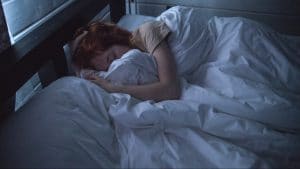


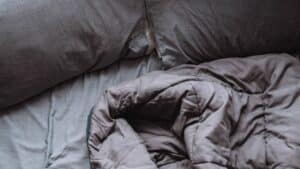

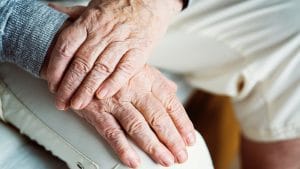
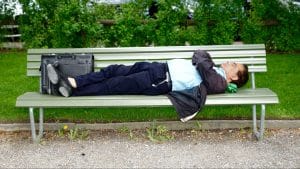
Warning: Undefined array key "format" in /home/602518.cloudwaysapps.com/cspedpjass/public_html/wp-content/themes/disturbmenot/template-parts/post-item/post-comment.php on line 23
Warning: Undefined variable $commenter in /home/602518.cloudwaysapps.com/cspedpjass/public_html/wp-content/themes/disturbmenot/template-parts/post-item/post-comment.php on line 27
Warning: Trying to access array offset on value of type null in /home/602518.cloudwaysapps.com/cspedpjass/public_html/wp-content/themes/disturbmenot/template-parts/post-item/post-comment.php on line 27
Warning: Undefined variable $commenter in /home/602518.cloudwaysapps.com/cspedpjass/public_html/wp-content/themes/disturbmenot/template-parts/post-item/post-comment.php on line 29
Warning: Trying to access array offset on value of type null in /home/602518.cloudwaysapps.com/cspedpjass/public_html/wp-content/themes/disturbmenot/template-parts/post-item/post-comment.php on line 29